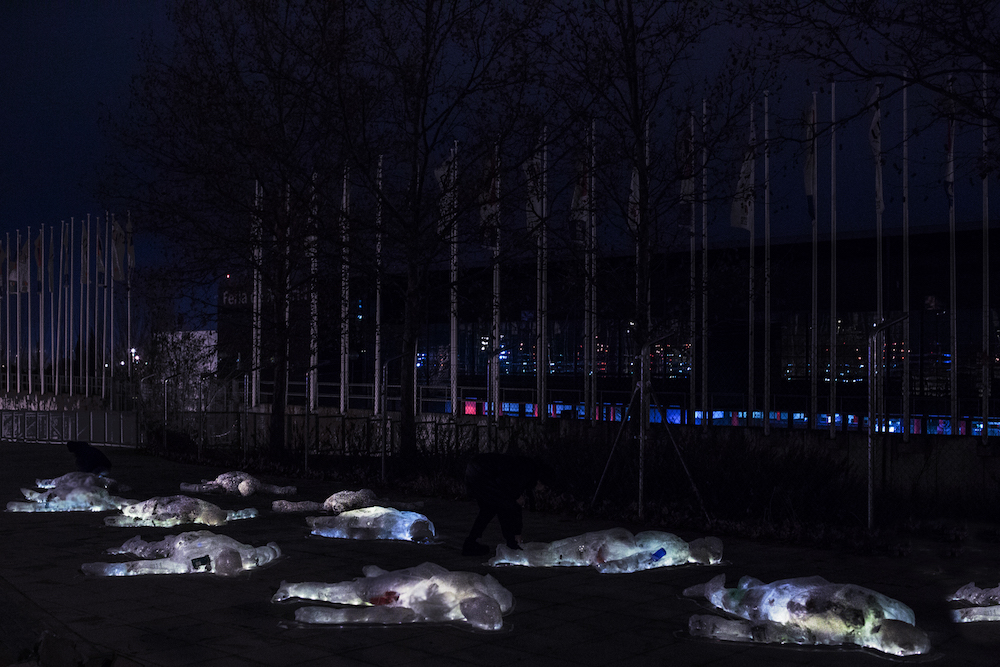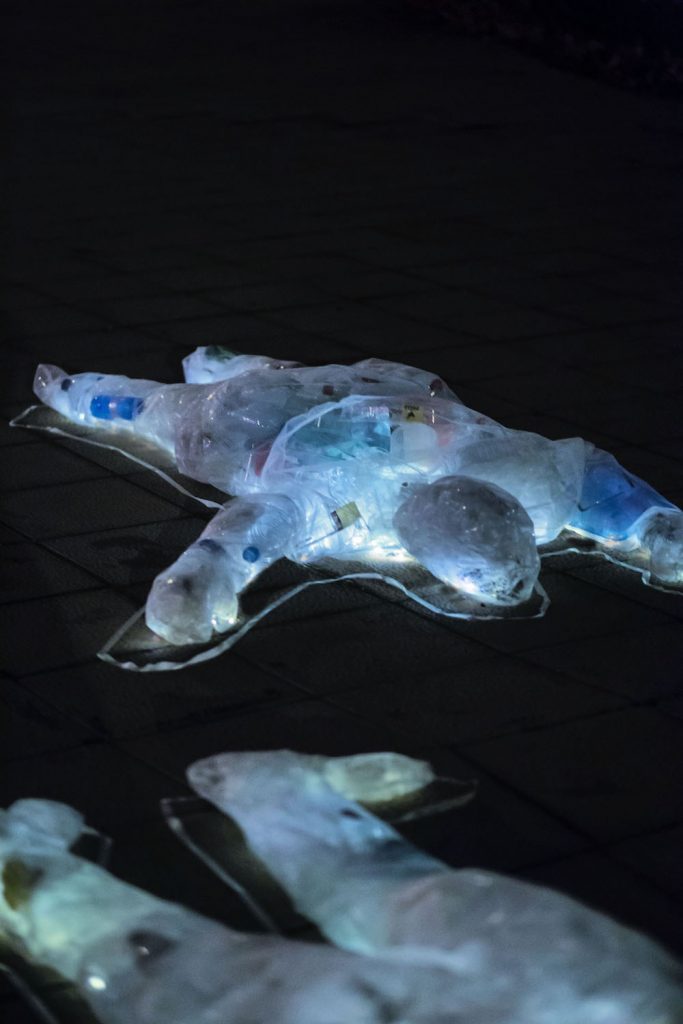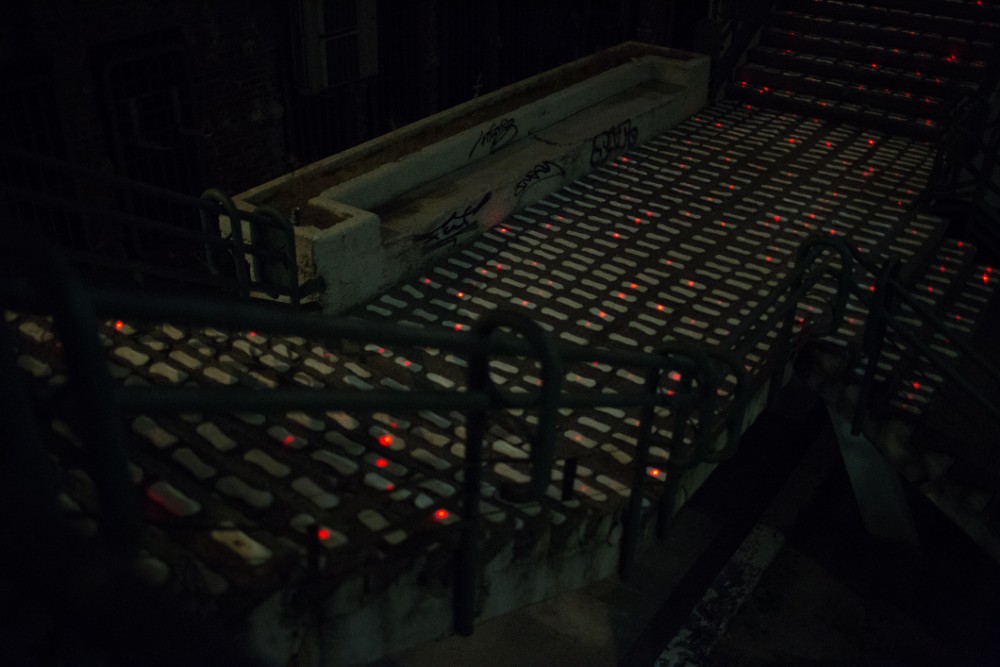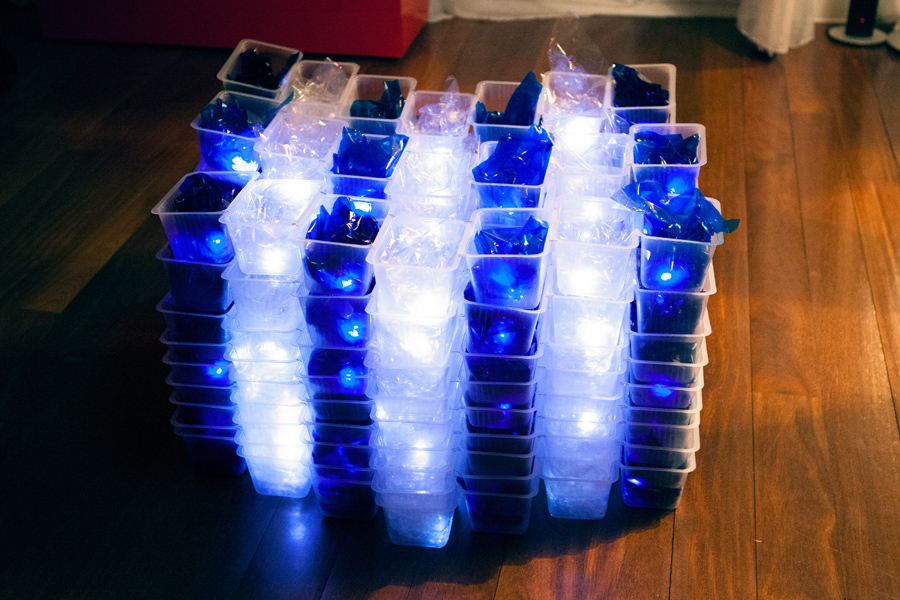Luzinterruptus is an anonymous lighting art collective based in Madrid, the capital of Spain. They are so anonymous that I can’t even get a straight answer of how many members they have within the group. Although their website says they have two artists, other websites claim they have three members. Regardless, together, they have backgrounds in art, lighting, and photography.
The group is known for their oftentimes illegal “guerilla” lighting installations focusing on issues within Madrid or society as a whole. Their hope is that these art pieces will bring attention to these problems and encourage change to occur. They chose to use light because of how impactful and attention-grabbing it can be without “damaging the space” so people and other artists can still use the space, which is limited in Madrid. For each of their pieces, they put an emphasis on the clean up process and returning the space to what it was. In addition to their subversive works, they also bring attention to small corners or objects in the city they find comforting or artistic. For this deep dive, we’re going to be focusing on their more subversive pieces that provide a commentary to their local social and political environment.
“We want to apply our creativity in a common action, leaving lights on in protest, so that other people turn them off.”
– Luzinterruptus
Death by Plastic (2019)
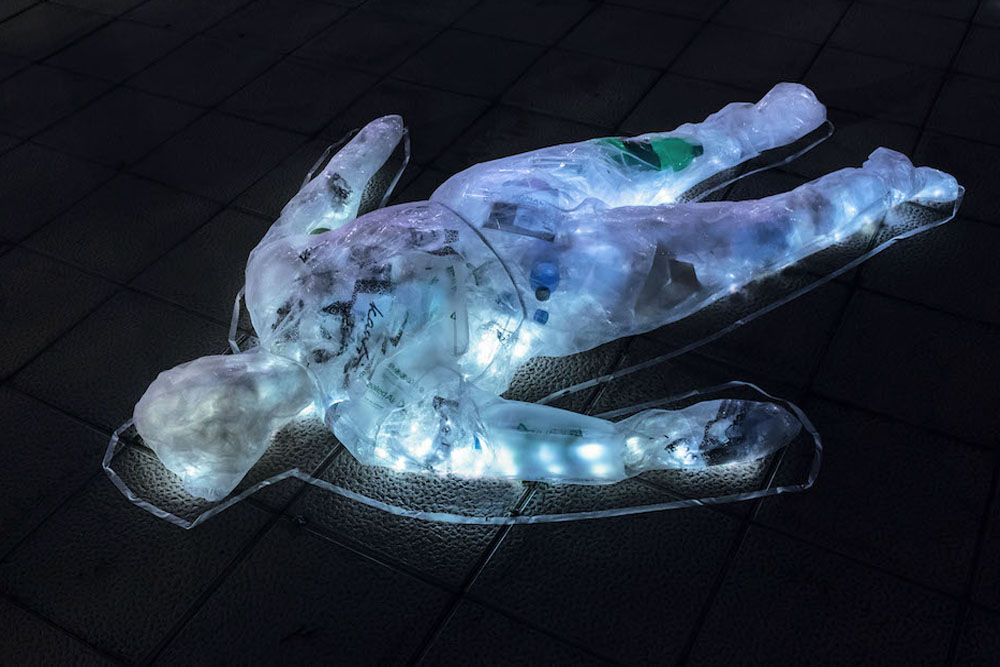
In December of 2019, Madrid hosted the United Nations Climate Change Conference, also known as COP25 Climate Summit. As the public and smaller countries advocated for stronger climate change policies, the biggest contributors to climate change, including the United States and China, chose instead to focus on their political agendas and shift the blame whenever possible. Half a million people came out to protest against these weak resolutions finalized in Madrid and Luzinterruptus joined with their piece, Death by Plastic.
This installation was constructed using transparent fabric to act as skin and waste collected from Madrid’s retail areas as a result of Christmas shopping. The bodies were placed outside the location the conference took place. They will then lit and chalked off to represent a crime scene, although the “chalk” appears to be even more plastic.
Here is an excerpt from a statement put out by Luzinterruptus:
“Let’s try again next year, perhaps with lengthier political speeches, but never listening to the scientific community or the citizens. And always under the sponsorship of the most polluting companies which are always happy to take this opportunity to clean up their image.
For now, the ‘climate crisis’ is officially postponed until the most environmentally unfriendly countries find a better time to deal with it.”
– Luzinterruptus
After being displayed for several hours, the group removed every trace of the installation.
Bottles Against the Olympic Games… (2013)

In March of 2013, the International Olympic Committee came to Madrid to consider the city as a host for the 2020 Olympics. Its well known, although not often publicly acknowledged by governments, that hosting the Olympic games comes at an expense to the city and the people within it. Enormous amounts of money are put into infrastructure, like roads and stadiums, only to then become notoriously underused. According to the group, Madrid is already not spending enough money in important societal needs, such as education and health.
For this installation, the group collected bottles and filled them with colored water. Cloth was then added with the ends dyed red and glowed red LEDs placed inside to represent fires. These bottles simulated Molotov cocktails to represent the destructive nature hosting the Olympic games represents. The approximately 500 cocktails were then arranged into the iconic Olympic rings, with each ring six and half feet in diameter.
The installation was placed in a well known park that was being proposed to be converted to the Olympic site during the night of March 18th. The goal was for the committee to find it during the inspection tour that was to take place in the next few days. When the group returned after the several days passed, there was no trace of their installation. It is unknown if the committee saw their piece but its safe to say the 2020 Olympic games were not hosted in Madrid.
For Women’s Safety (2013)

Unlike the other installations I highlighted, this piece is not in response to a specific event or policy but is a commentary on how society treats women. Despite Madrid’s tourism department’s insistence that the city is incredibly friendly, there are many areas within the city where women feel unsafe, especially at night. The group surveyed multiple women and researched online to locate some of these unsafe areas.
The group decided to focus on one of Madrid’s financial districts. Although busy with business workers during the days, at night, its taken over by dance clubs, bordellos (brothels), and homeless people.
Maxi pads were chosen for this installation as they’re often depicted to have “magical properties” and are associated with comfort, fun, fluffiness, and the color blue according to advertisements. The group concluded that (sarcastically) large amounts of maxi pads in these unsafe locations will help women feel safe. Sanitary pads also represents the divide of rich countries and poorer countries, where the former rightfully considers them essential and latter may consider them unaffordable and taboo.
One thousand maxi pads were placed with blinking LED lights inside them. The first area had many stairs and dark tunnels and it was carefully covered in these maxi pads. The second location had “rails” of maxi pads to guide the few women out in the area at night. Male pedestrians that passed by these installations often looked away, appearing uncomfortable by the presence of the pads and the color red within them.
After a total of five hours of being displayed, the group removed all the maxi pads from the locations.
The Police Are Present (2014)
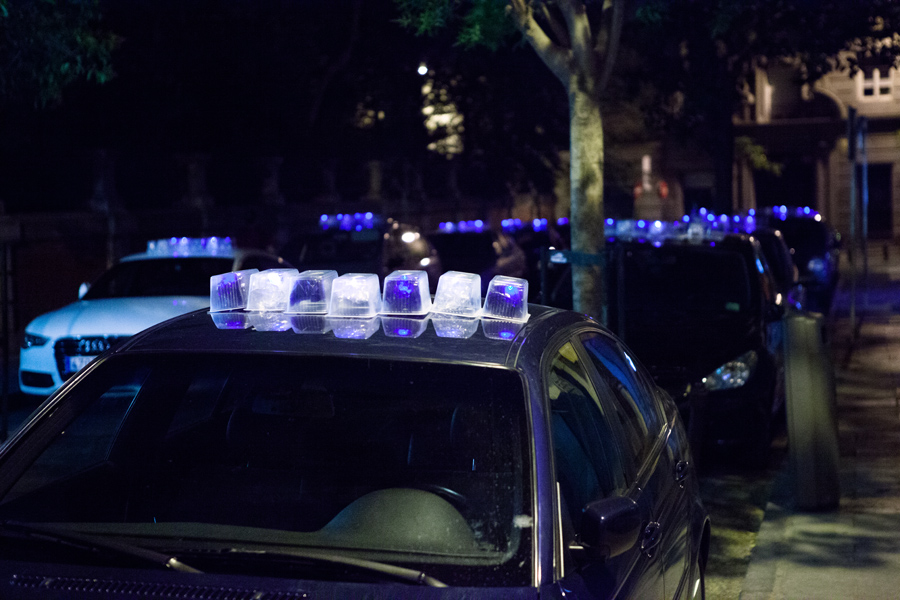
On July 11th, the Citizen Security Law, more well known as the Gag Law, was approved. The incredibly controversial law infringed on the Spanish citizens’ right to assemble and protest against the government, therefore, infringing on the citizens’ constitutional rights. It gives more freedom to police forces to arrest, fine, and brutalize the public when their exercising their right to assembly.
To create this art installation, the group obtain two hundred plastic roast chicken containers, cellophane colored white and blue, and blinking LED lights. Assembled, these objects became police car lights and Luzinterruptus placed these “flashing police sirens” on top of thirty parked cars.
The location the group chose for the installation was purposeful. It was installed the day after the Gag Law was approved and outside the Congress of Deputies, which has many security forces. They transformed the street of parked cars to a street full of police cars and flashing lights. This represented a possible future where the police were ever present and constantly able to scrutinize the public.
References
https://www.luzinterruptus.com/
https://inhabitat.com/luzinterruptus-turns-plastic-waste-into-death-by-plastic-eco-art-for-cop25/
https://www.brookings.edu/blog/planetpolicy/2019/12/16/at-climate-summits-the-urgency-from-the-streets-must-be-brought-to-the-negotiating-table/
https://www.britannica.com/list/7-ways-hosting-the-olympics-impacts-a-city
https://www.designboom.com/tag/luzinterruptus/
https://www.dezeen.com/tag/luzinterruptus/
